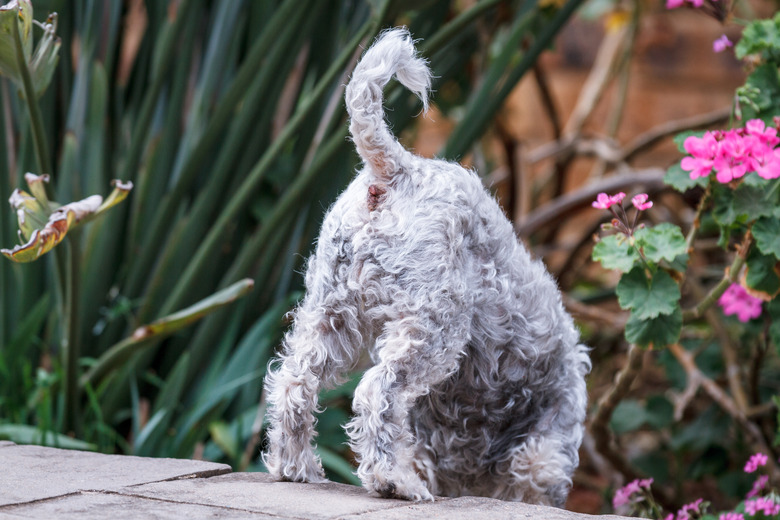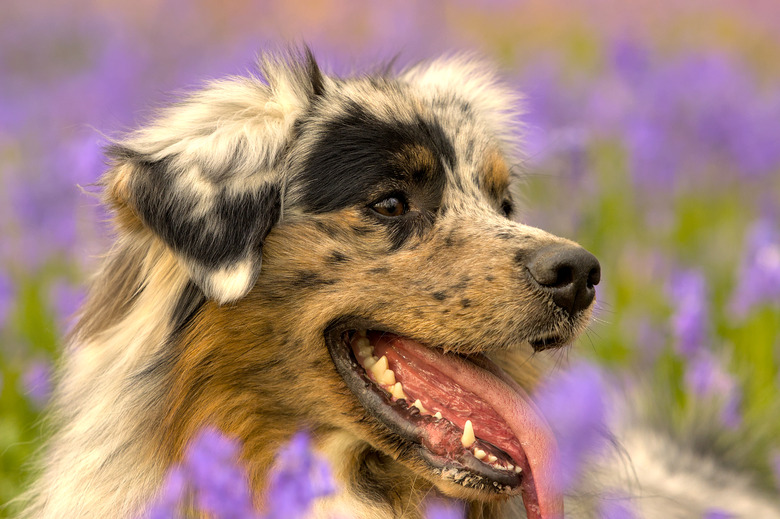What Are The Causes Of Abscesses On Dogs?
Finding a lump on your dog can be alarming, especially if it seems to have popped up quickly — and even more so if your dog seems pained in that area. While there can be many causes of bumps or swollen spots on a dog, an abscess is one of the most common culprits. If you are concerned that your dog might have an abscess, make an appointment with your veterinarian right away.
What are abscesses in dogs?
What are abscesses in dogs?
An abscess is a bacterial infection (such as Staphylococcus) characterized by a raised, cystlike pocket of pus. Pus contains white blood cells, organisms, and cellular debris. An abscess can form on any area of your dog. They can even get internal abscesses. The most common causes of abscesses on dogs are bites, scratches, or cuts in which a bacterial infection develops.
Symptoms of abscesses in dogs
Symptoms of abscesses in dogs
A dog who has an abscess will typically display some of the following signs:
- Any size of swollen bump (these typically crop up quickly, sometimes seemingly "out of nowhere")
- Pain at the site of the bump
- Excessive licking of the area
- Hair loss at the site of the bump
- Redness and/or warmth to the touch in the area
- Oozing of pus from the area (indicating a ruptured abscess)
- Limping
- Fever
- Lethargy
Possible causes of an abscess on a dog
Possible causes of an abscess on a dog
An abscess is the result of an infection, so if your dog has any of the above symptoms and has recently experienced any of the injuries or issues below, chances are they have an abscess. Visit your veterinarian for confirmation.
Bites
Dogs who are bitten by other animals, particularly wild animals and cats, often develop abscesses at the points of the bites. Infection can be caused by bacteria transfer from the biting animal's teeth and saliva. Abscesses from cat bites often involve the bacteria Pasteurella multocida because this organism is a normal part of the flora in cat mouths.
Treatment for a dog abscess caused by a bite wound
Medical treatment for a bite-related canine abscess usually involves examining the dog for signs of puncture marks on other parts of the body. A veterinarian or veterinary technician will shave around the wound so the area can be examined and thoroughly cleaned. Depending on how close the abscess is to the surface of your dog's skin, the veterinarian might apply gentle pressure or use warm compresses to help drain pus and bacteria from the wound.
For deeper abscesses, your veterinarian might also lance and drain the abscesses and then stitch it up. They may install a piece of tubing called a Penrose drain so pus can continue to flow out of the wound for several days. Your veterinarian will remove it after the abscess site stops oozing. Placement of the drain requires heavy sedation and sometimes local anesthesia, or general anesthesia.
The dog will receive antibiotics and an anti-inflammatory pain medication. In the case of an abscess resulting from a wild animal bite, your veterinarian will also instruct you on how to proceed with quarantine and a rabies booster depending on your pet's vaccination status.
Cuts and scratches
Dogs who spend time outside can be prone to scratches and cuts from fences, lawn debris, and thorny trees and bushes. The plant matter and sharp parts of trees and bushes can become foreign objects which can become lodged in your pet's body. A cut or scratch that goes unnoticed and untreated may develop an abscess at the point of injury. A dog who steps on a sharp object and develops a skin abscess might walk with a raised paw or lick at the wound constantly.
Treatment for a dog abscess caused by a cut or scratch
Dog abscesses that are caused by scratches or cuts are typically treated with oral antibiotics; in some cases, an oral pain medication will also be dispensed. During recovery, the dog should be kept indoors and inactive as much as possible. If the abscess is on your dog's paw, cover the area before they go outside. A simple way to do this is to put a baby- or child-size sock on the affected foot. If the ground is wet, use a plastic grocery bag to protect the paw. Your veterinarian will instruct you on the best way to clean the wound and how often to do so. However, if your pet's abscessed paw gets dirty outside, you will need to clean it again.
Dental problems
A dental abscess typically forms along the dog's gum line and is caused by a decaying, infected tooth or severe periodontal disease. A tooth root abscess will sometimes look like a red, swollen bump. In some cases, a wound will actually break open on the dog's cheek because the abscess is trying to drain.
Treatment for a dog abscess caused by dental problems
Your veterinarian will usually X-ray your dog's mouth to determine the best course of medical treatment for the dental abscess. The affected tooth will need to be addressed. It can be extracted, or a board-certified veterinary dental specialist will need to do a root canal. Both procedures require general anesthesia. Pain relief and a course of antibiotics will also be part of the treatment plan.
Anal sac impaction
A dog's anal sacs are prone to abscesses, particularly the anal sacs of small dogs. Anal sacs drain naturally through a dog's anus when they defecate, but if the sacs become too full (you might notice your dog "scooting" their butt on the floor when this happens) or if they are incompletely drained or impacted, an abscess can develop. Preventive treatment via anal sac expression is the best way to avoid abscesses. Since food and environmental allergies can also cause anal gland issues, managing a dog's allergies is also essential.
Treatment for a dog abscess caused by anal sac impaction
Abscesses that develop are typically treated with anal gland expression, flushing of the wound with saline, "anti-inflammatory medication, and antibiotics. In some severe cases where the anal glands keep becoming infected, surgical removal of the sacs is necessary.
The bottom line
The bottom line
If you notice a swollen bump on your dog, especially if the area is painful, hot to the touch, and oozing pus, your dog most likely has an abscess. This bacterial infection can develop as the result of anything from a bite wound to dental issues. Treatment options depend on the type and location of the abscess. Your DVM might lance and drain the wound, and they will most likely prescribe an antibiotic and pain medication. Surgery might be called for if the abscess is severe. Dog owners should consult with their veterinarian for the best course of action.


